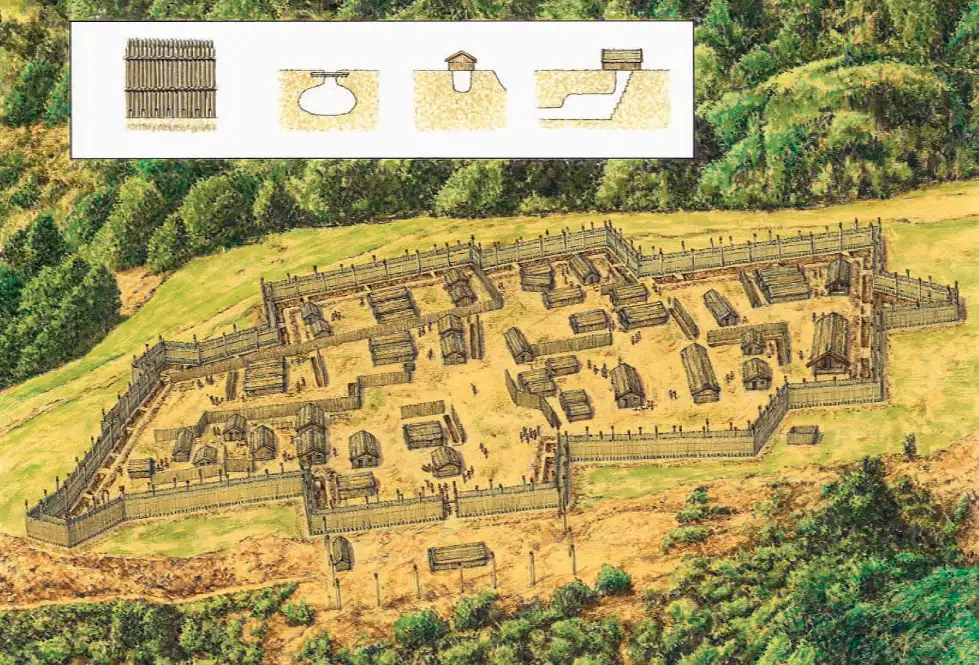Ruapekapeka Pā is one of New Zealand’s most impressive and historically significant battlefield sites. Located near Kawakawa, this DOC-managed historic reserve allows you to walk through the massive earthwork fortifications built by Te Ruki Kawiti and his warriors in 1845 – a revolutionary defensive system featuring underground tunnels and bunkers designed to withstand British artillery bombardment.
The site was the location of the Northern War’s final battle in January 1846, when around 400 Ngāpuhi and Ngāti Hine warriors defended these fortifications against British forces. What makes Ruapekapeka extraordinary is the sophistication of its design – an underground network inspired by traditional eel traps (puru tuna) that allowed defenders to move safely between positions while British cannons bombarded the surface.
Today, you can explore the visible earthwork ramparts, walk through the defensive layout, and understand through interpretation panels how this ingenious fortification system worked. The commanding hilltop position offers views across the surrounding landscape, helping you appreciate the strategic thinking behind the site’s selection.
Why Visit Ruapekapeka Pā
Ruapekapeka Pā represents a turning point in 19th-century warfare where innovative Māori military engineering confronted British colonial forces. The massive earthwork fortifications were specifically designed to absorb cannon fire, while an extensive underground network of bunkers and tunnels – inspired by traditional puru tuna (eel traps) – allowed warriors to move between defensive positions protected from bombardment. The British were so impressed they created detailed drawings of the system after the battle.
Walking through these fortifications provides tangible connection to the Northern War’s final battle in January 1846. Unlike reading about history in museums, you experience it through the landscape itself – the scale of the ramparts, the strategic position, and the defensive layout all reveal themselves as you explore. This is where people fought and died defending rights guaranteed under Te Tiriti o Waitangi, making it a site of profound historical and cultural significance to Ngāpuhi and Ngāti Hine that deserves appropriate respect.
What to See & Do at Ruapekapeka Pā
Walk the Fortifications
Well-maintained tracks take you through the earthwork defense system. Explore the massive raised ramparts, defensive ditches, and strategic layout that made this fortification so effective. The scale and sophistication become clear only when walking within the earthworks themselves.
Interpretation Panels
DOC panels throughout the site explain the January 1846 battle, the innovative underground tunnel system, how fortifications were designed and constructed, and the broader context of the Northern War. Allow time to read these – they bring the earthworks to life.
Strategic Position
The commanding hilltop location offers views across the surrounding landscape, helping you understand why this position was chosen and how defenders could observe approaching forces.
Respect & Reflection
Ruapekapeka Pā is a place where people fought and died defending their rights and lands. Take time to reflect on the human stories behind the earthworks and the continuing significance of this history to Ngāpuhi and Ngāti Hine. The site provides excellent photography opportunities, particularly in early morning or late afternoon light.
Practical Info: Getting There & Visitor Tips
Getting There
Ruapekapeka Pā is located approximately 14 kilometers south of Kawakawa in Northland.
By car: From Kawakawa, head south on State Highway 1 and turn into Timperley Road near Towai. Follow signs to Ruapekapeka Pā. The site is well-signposted with parking available.
From the Bay of Islands: The drive from Paihia takes approximately 30-40 minutes. Head south through Kawakawa on State Highway 1, then follow directions above.
Facilities & Services
What’s available: Parking, interpretation panels, walking tracks, free entry during daylight hours.
What’s NOT available: No toilets, drinking water, food services, shops, or visitor center. Limited mobile phone coverage.
What to bring: Sturdy walking shoes (essential – ground can be muddy after rain), water, sun protection, rain gear if weather uncertain, camera, and insect repellent in warmer months.
Visitor Tips
Time required: Allow 1-2 hours to walk the site and read interpretation panels.
Best time to visit: Year-round during daylight hours. Spring and autumn offer comfortable temperatures. Early morning or late afternoon provides best light for photography. After rain, earthworks can be muddy and slippery.
Walking conditions: Tracks are generally good but uneven. Earthworks can be steep in places. Wear appropriate footwear – boots preferable. Suitable for most fitness levels.
Respect the site: This is a place of profound historical and cultural significance. Stay on marked paths, don’t disturb earthworks, and treat the site with appropriate respect.
Learning more: For detailed information, visit the official DOC website at www.ruapekapeka.co.nz.
Combining with other attractions: Ruapekapeka Pā combines well with visits to Kawakawa (famous for Hundertwasser public toilets) and the Kawiti Caves. Consider a day trip from the Bay of Islands.
Local Listings to Explore
Nearby Attractions
Kawakawa: The nearby town is famous for its Hundertwasser public toilets and offers shops, cafés, and services. Just 14km north of Ruapekapeka Pā.
Browse more Places to See in the Bay of Islands
Tours & Activities
Some Bay of Islands tour operators may offer historical tours including Ruapekapeka Pā. Check with local tour companies for current offerings.
Browse Tours & Activities in the Bay of Islands
Accommodation
No accommodation exists at Ruapekapeka Pā itself. Visitors typically base themselves in Kawakawa, Paihia, Russell, or other Bay of Islands towns, all within 30-40 minutes’ drive.
Browse Accommodation options in the Bay of Islands
Food & Drink
No food facilities exist at Ruapekapeka Pā – bring supplies for your visit. Kawakawa township (14km north) offers cafés, bakeries, and takeaway options.
Map
Sorry, no records were found. Please adjust your search criteria and try again.
Sorry, unable to load the Maps API.

